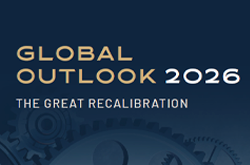Towards the probable disappearance of LIBOR
In order to strengthen the protection of savers, borrowers and investors, the replacement of certain benchmark indices is under consideration to increase their reliability and robustness.
In addition, the LIBOR1 benchmark index, which is widely used in many financial instruments and contracts, may cease to exist after December 31, 2021.
In this context, the international public authorities have clearly stated that this disappearance would result in a gradual reduction in the number of new transactions referring to it.
The development of the use of alternative risk-free rates2 (RFR) that are already available on the main currencies is favoured for the replacement of LIBOR.
However, with the exception of the maturity date of 31 December 2021, transition schedules are currently being defined and may differ depending on the currency and activity concerned.
As part of these reforms and in line with market research, Indosuez is joining forces with the Crédit Agricole group to analyse all the characteristics of these new indices and the terms of their use and to prepare for a scenario in which LIBOR would disappear by the end of 2021 on all currencies.
[1] LIBOR: London Interbank Offered Rate. This rate, which reflects the average rate at which a panel of banks borrows on an unsecured basis for the short term, is published for 5 currencies (CHF, EUR, GBP, JPY, USD) and 7 maturities (up to 12 months). It is administered by the ICE Benchmarks Administration (IBA) which is supervised by the FCA in the UK and complies with the Benchmarks Regulation (BMR).
[2]
| Currencies | Risk Free Rate |
| GBP | SONIA (Sterling Over Night Index Average) |
| CHF | SARON (Swiss Average Rate Overnight) |
| USD | SOFR (Secured Overnight Financing Rate) |
| JPY | TONAR (Tokyo Overnight Average rate) |
| EUR | €STR |
October 07, 2020




